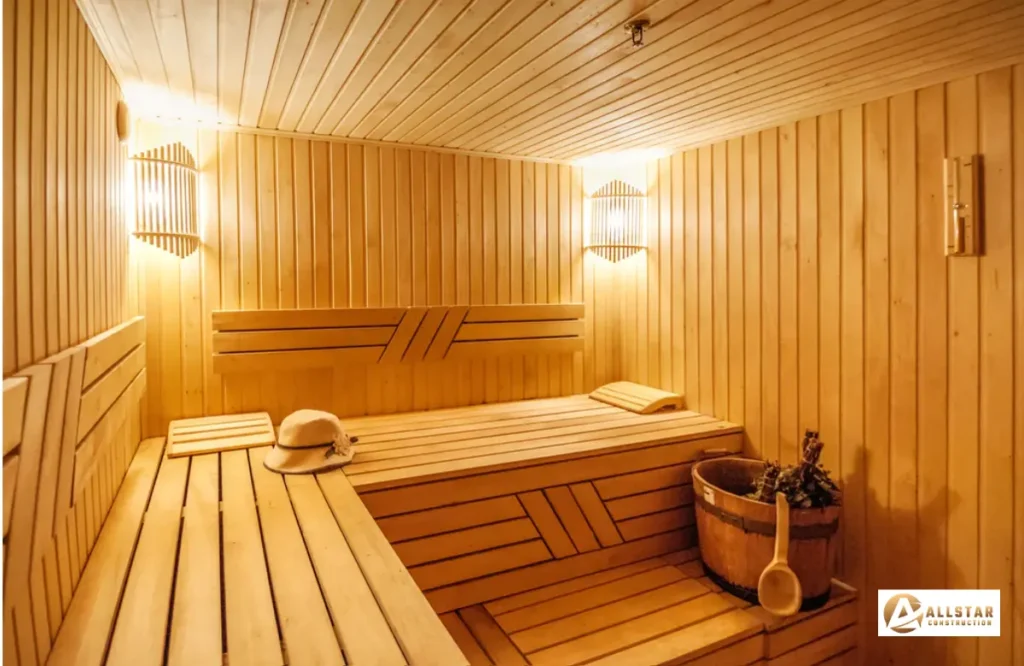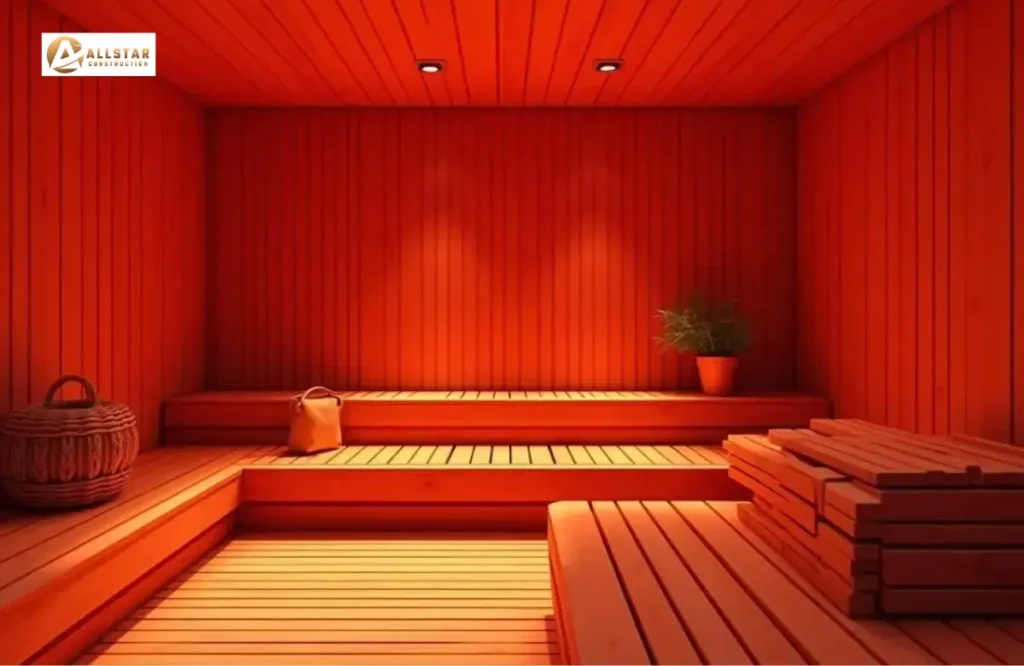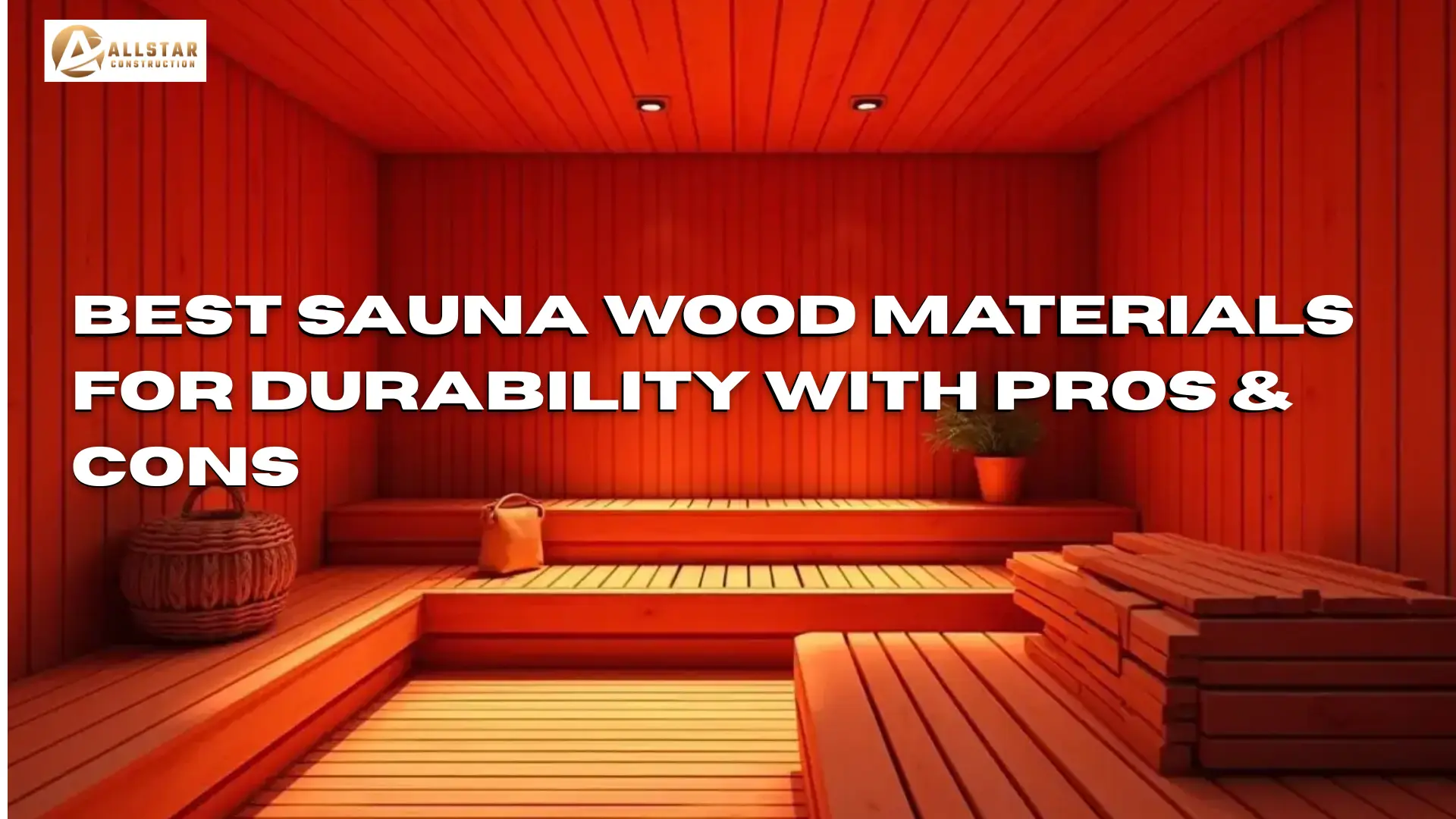For constructing a sauna, the wood selection is the crucial factor. As a sauna reaches high temperatures and fills with steam, the wood used must be able to withstand the heat for an extended period without cracking or distortion. Additionally, the wood should give off a comfortable and safe feeling when someone is sitting on it while still retaining the warm, natural texture of the room. We are going to find out about some of the best sauna woods, which are not only strong and durable but also suitable for making a cozy and lasting sauna experience. Discovering the best woods to make your sauna the last one to be hit by the time will be our next step!
What Makes a Wood Durable for Sauna Use?
Choosing the ideal wood for your sauna is not just about selecting wood that looks good. It is about choosing wood that can cope with the unique challenges posed by the hot and humid conditions of the sauna. These are the three main factors that determine whether or not a wood is a durable and dependable one for sauna use:
Water Resistance
Saunas are high in heat and steam. Thus, the wood used in the construction must be water-resistant and decay-resistant on a natural basis. Moisture-resistant wood can slow down the appearance of mold, mildew, and rot, the sources of the sauna’s damage. Certain woods even get special treatment for water resistance.
Heat Resistance
First of all, the wood for the sauna services needs to be a material that can stand very high temperatures without cracking or getting brittle. Such wood resistant to heat will be less likely to change its volume and form during heating and cooling, thereby keeping the sauna’s structure and its look intact.
Stability and Durability
The wood used for a sauna should be strong enough to go through the process of heating and cooling without any kind of deformation, reduction in size, or separation. The low movement of the stable woods guarantees that the benches, walls, and ceilings that are made from them will still be solid and safe even after a long time of usage.

Low Resin Content
Woods that are almost completely free from resin are the best choice for sauna use. Resin, when it is hot, can become sticky and it can also cause discomfort or damage. Nonresin woods not only remain cool to the touch but also ensure that the surface is clean and smooth.
Heat Treatment (Thermal Modification)
Some sauna woods are given a heat-treatment, which is a natural process that greatly reduces water absorption and imparts resistance to decay and insects. This process also makes wood less prone to shrinkage and cracking, thus extending the service life.
Top 5 Sauna Wood Materials for Durability
Durability is the main factor when choosing wood for building a sauna that can survive all the intense heat, moisture, and temperature changes over time. There are several wood materials that are known for their durability and are the most appropriate for sauna use:
1. Western Red Cedar
Among many wood types, Western Red Cedar is the most suitable one for saunas. The cabin ones often choose it because of:
Pros:
- Completely waterproof, resistant to decay, and insects’ attack
- Great insulation properties, due to which the heat is kept in
- Nice and refreshing to the touch
- Its nice aromatic smell gives the sauna a nice aroma
- Will not decay even after long periods of time
Cons:
- Its price is quite high compared to other woods
- It will need regular care for it to remain bright
Properties:
Softwood with close grain has natural oil that makes it durable and good thermal insulation.
2. Thermally Modified Wood (Thermowood)
A house made of Thermowood is suitable for the absorption of humid air inside the sauna.
Pros:
- Heat-treated for extra strength against stretching, cracking and rusting
- Takes in less dampness, though a sauna is usually a humid place
- Free of any chemical treatment and environmentally friendly
- Very stable from a dimensional point of view
Cons:
- More expensive due to the additional processing
- Availability may be limited in some regions
Properties:
Heat-modified cellular structure that improves dimensional stability and moisture resistance
3. Canadian Hemlock
Canadian Hemlock is just as durable as Red Cedar.
Pros:
- Tightly grained with a smooth texture free of knots
- Low resin content results in no sticky surfaces
- Comfortable seating made of benches and walls
- Soothing and subtle fragrance
- An economical choice
Cons:
- Not as aromatic and moisture-resistant as cedar
- Require protective finishes to retain their life span
Properties:
Softwood, stable grain, no allergens, moderate heat retention
4. Aspen
Aspen wood is used for sauna interiors.
Pros:
- Almost completely free of resin, thus no sticky sap problems
- Resistant to moisture and temperature changes
- Bright color with a very smooth and neat look
- Has a low thermal conductivity; therefore, it is always cool to touch
Cons:
- Softer and prone to denting
- Less natural resistance to decay compared to cedar
Properties:
Non-resinous hardwood, low thermal conductivity, moderately durable

5. Nordic Spruce and Pine
Both Nordic Spruce and Pine have been used for many years in the construction of traditional Finnish saunas.
Pros:
- The most appropriate wood for classic traditional Finnish saunas
- The closely spaced growth rings contribute to the dimensional stability
- Relatively cheap and easily accessible
- When properly dried and treated, it is a good insulator
Cons:
- The higher resin content can make the wood surface sticky
- Less resistant to wear and tear than cedar or hemlock
- Only for the dry sauna after thorough drying and treatment
Properties:
Softwoods, dense structure, moderate moisture resistance with proper treatment
Indoor vs. Outdoor Sauna Wood Considerations
| Wood Type | Key Benefits | Best For |
| Western Red Cedar | Moisture & decay resistant, aromatic | Indoor & outdoor saunas |
| Thermally Modified Wood (Thermowood) | Extra durable, water-resistant | Outdoor saunas |
| Canadian Hemlock | Stable, low resin, smooth | Indoor saunas |
| Aspen | Non-resinous, cool to touch | Indoor saunas |
| Nordic Spruce/Pine | Affordable, traditional | Indoor & outdoor (treated) |
Sauna Woods to Avoid for Long-Term Durability
Using inappropriate wood for the construction of a sauna or during the process of its redecorating can result in various issues, including distorted shapes, cracks, the release of unpleasant odors, and even potential health risks. To ensure that the first things to last and safety are the priorities, these are the kinds of woods that should be totally avoided.
Pressure-Treated Wood
Pressure-treated wood, although resistant to decay and insects by way of chemical treatment, has such chemicals that make it unsafe and inadequate for sauna use, as these vapors make it hazardous when a sauna is exposed.
Green or Unseasoned Wood
Improperly dried wood tends to have a very high water content, which leads to it losing its initial shape, getting tiny surface cracks, or even larger splits during the sauna heating and steaming process. Therefore, always go for kiln-dried or properly seasoned wood.
High Resin Content Woods (e.g., Pine, Fir, Spruce in some cases)
Woods filled with resin or sap are prone to a meltable sticky secretion upon heating, to emit odors that most people find unpleasant, and even to irritate the respiratory tract of those who breathe nearby air. Moreover, resin makes wood that is resistant to common fire in hot saunas.
Woods with Toxic Properties (e.g., Yew)
Some woods consist of toxins that are able to emit hazardous combinations when heated, thus causing health risks. Saunas made of toxic woods like Yew should never be considered.
Low-Durability Woods (e.g., Poplar)
A few cheap or soft woods, for instance, Poplar, are so weak in terms of strength and resistance that they cannot last in a sauna environment and will decay in a short period of time.
Maintenance Tips for Long-Lasting Sauna Wood
- Wipe down benches and walls with a damp cloth after each use.
- Avoid letting water pool on the wood surfaces.
- Use towels or seat covers to protect benches from sweat and moisture.
- Let the sauna air out and dry completely after each session.
- Apply a breathable wood preservative or sauna-safe oil once a year.
- Lightly sand rough or stained areas as needed and re-treat.
- Avoid harsh chemicals or power washing; stick to mild cleaners.
- Prevent sitting with wet clothes or swimsuits directly on wood.
Conclusion
A right and solid wood choice for your sauna is the first step to enjoying a sauna oasis that will last long. As long as the correct wood is chosen for the sauna and the regular maintenance is done, the sauna will not only be beautiful and safe but also will be long-lasting, which means a lot of years of comfort and relaxation. It doesn’t matter if it’s Western Red Cedar, Thermowood, or Aspen; the three woods have different features that can be perfect for different requirements and tastes. At All Star Construction Group, we are experts in designing and installing durable, high-quality saunas that are personalized to meet your specific desires. Get in touch with us today and initiate the process of building your ideal sauna sanctuary.
FAQs
Western Red Cedar and Thermally Modified Wood are the leading choices for both durability and comfort.
After every use, wipe down all surfaces and take a deep cleaning every month.
No, do not use resinous, treated, or toxic woods as they may result in damage and health risks.
Maintain a good humidity level and do not let the temperature inside the sauna change drastically.
Yes, apply a sauna-safe wood oil once or twice a year to protect and preserve the wood.


